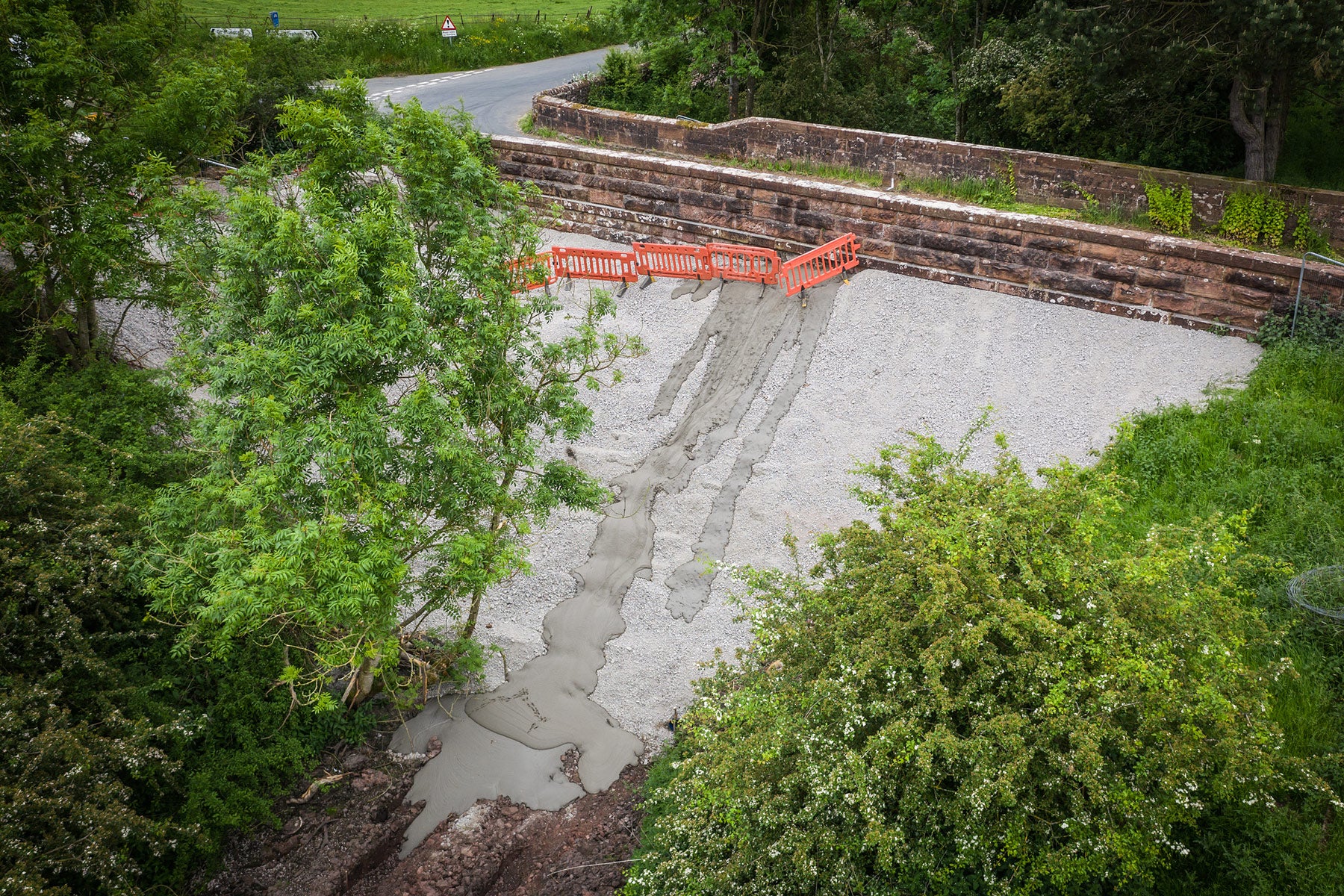Decision to fill Victorian arch with concrete branded ‘cultural vandalism’
More than 100 historical structures are at risk of being filled with concrete

Highways England could be made to remove hundreds of tonnes of concrete that it has used to fill in a Victorian arch after the act was branded “cultural vandalism”.
The roads agency had filled the Great Musgrave bridge in Cumbria with unsightly concrete and aggregate.
It is the first structure to be infilled as part of a project involving more than 100 historic structures across England.
The filling in of the arch by Highways England (HE), has been described as “cultural vandalism” by Labour’s Richard Faulkner in a Lords debate earlier this month.
HE had carried out the work under its Permitted Development Rights, after informing Eden District Council that infilling was required to “prevent further deterioration of the bridge” and “remove the associated risk of structural collapse”.
The council announced in June that HE was “preparing to undertake works to infill the bridge at Great Musgrave.”
But this week the council has told HE that it needs to apply for retrospective planning permission for the scheme within the next year. If planning is refused, HE will have to restore the bridge to its former state by removing the concrete.
HE – which manages the Historical Railways Estate of 3,100 disused railway structures for the Department for Transport – has confirmed its intention to seek retrospective planning permission.
Campaigners hope that the planning permission, which has a time limit for submissions and objections of May 2022, will frustrate the agency’s plans to fill in other Victorian rail structures.
The HRE Group – an alliance of engineers, sustainable transport advocates and greenway developers – said that the bridge is one of 115 disused railway structures earmarked for infilling by HE, with 15 others due for demolition.
HRE Group member Graeme Bickerdike has described transport minister Charlotte Vere’s description of the Great Musgrave bridge as unsafe as “either a deliberate attempt to deceive or a demonstration of incompetence”.
HE’s own engineers have claimed the bridge presented “no significant risk” and that they had recommended repointing the brickwork to strengthen the bridge at a cost of £5,000 compared with the £124,000 cost of filling it in with concrete – Mr Bickerdike said, according toThe Guardian.
In a petition, the campaigners claimed Baroness Vere had “misrepresented” the process by suggesting Highways England had consulted over the move to fill with concrete.
The HRE Group wrote on Wednesday: “[Baroness Vere] suggested that Highways England had consulted the Eden Valley and Stainmore railways about the infilling scheme – which it hadn’t – and asserted that the work was urgent because the bridge deck could suddenly fall. The structure was, of course, absolutely fine.
“But this is indicative of the shabby culture we’re having to fight against. Highways England has spent the past six months perpetuating deceit about its infilling programme.
“It is a matter of considerable regret that Ministers just believe whatever rubbish they’re told rather than asking appropriate questions.”
Defending the decision to fill with concrete, Baroness Vere said: “The structure was weak, potentially causing the bridge deck to fall suddenly... Highways England made the decision to proceed on the grounds of public safety.”
Richard Marshall, HE’s historical railways estate director, had said: “The bridge was deteriorating, and no weight restriction was in place, meaning it could be used by vehicles of any weight.
“The support provided by infilling the arch removes the risk of the bridge deck failing.”
He added: “If the land and Eden River crossing issues get resolved, then we would be delighted to work with any rail groups and the local authority to remove the infill at no cost to them.”
The Greeps Bridge near Saltash, Cornwall, designed by renowned Victorian engineer Isambard Kingdom Brunel, is earmarked for infilling.
Last September, HE England had told Cornwall Council that the bridge is damp and has “calcite deposits throughout the arch barrel” and that “there is standing water beneath the structure.”
Subscribe to Independent Premium to bookmark this article
Want to bookmark your favourite articles and stories to read or reference later? Start your Independent Premium subscription today.

Join our commenting forum
Join thought-provoking conversations, follow other Independent readers and see their replies